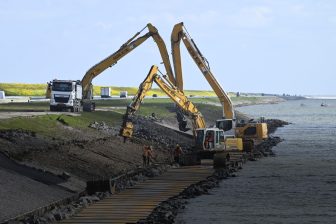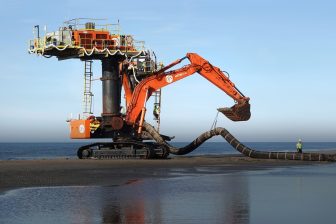TEN-T and Natura 2000: the way forward
Brussels, Belgium – On 13 May 2008 at the European Parliament in Brussels, the European Federation for Transport and Environment (T&E) together with BirdLife International, CEE Bankwatch and EEB launched a groundbreaking report on unifying EU transport and nature conservation policy.
Below you find the introduction to the publication by BirdLife International.
BirdLife International has just launched a new study on the potential conflicts between the Trans-European Transport Network Priority Projects and the Natura 2000 network. If Europe is to lead the way to truly sustainable development it is essential that EU transport and environment policies are joined up both politically and technically and this report aims to promote a positive approach to such joined up government.
Trans-European Transport Network (TEN-T)
The TEN-T is the European Union’s Transport Infrastructure Framework. Initially adopted in 1990 it now includes Priority Projects on 30 international axes plus wider transport projects. By 2020 it is envisaged that the TEN-T will include 89,500 km of roads, 94,000 km of railways, 11 250 km of inland waterways including 210 inland ports, 294 seaports and 366 airports.
Natura 2000
Natura 2000 is the European ecological network that is one of the cornerstones of the EU’s environmental policy and is a world leading approach to conservation. It is comprised of Special Protection Areas (SPAs) designated under the EC Birds Directive and Sites of Community Importance (SCIs) identified under the EC Habitats Directive. When completed, the Natura 2000 network is expected to cover more than 20% of the territory of the European Union.
How transport projects can damage Natura 2000
Transport infrastructure can have a wide range of impacts on Natura 2000 and wider biodiversity. Direct effects such as habitat loss from transport location and development and indirect effects such as water and air pollution, fragmentation and disturbance from the operation of transport. In addition, secondary/induced effects such as the impacts of development ‘encouraged’ by the transport networks and cumulative effects.
Threat to Natura 2000
The new study found that 379 SPAs (8.0% of all the SPAs in the EU25) and 935 Sites of Community Importance/potential Sites of Community Importance (SCIs/pSCIs) (4.4% of all SCIs/pSCIs in the EU25) are likely to be affected by the twenty-one TEN-T Priority Projects analysed.
Priority Projects are the tip of the ‘TEN-T iceberg’, implementation of the whole TEN-T network could have much more severe impacts, both on individual sites and on Natura 2000 network coherence. With anticipated consequences of climate change if our ecosystems are to survive they will need to be well connected and consideration and assessment of impacts on network coherence and fragmentation in Europe – already the world’s most fragmented continent – will become even more important.
The report ‘TEN-T and Natura 2000: the way forward’ can be downloaded from the website of BirdLife International Also available at this website is the leaflet of the full report with a summary of the main findings.
U las zojuist één van de gratis premium artikelen
Onbeperkt lezen? Profiteer nu van de introductieaanbieding voor € 10,- per maand.
Bent u al abonnee?



